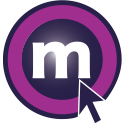Let’s start with a plain fact here: When employees can’t move forward, they move on. And they sure won’t leave their skills behind when they do.
This is why employee development is so important and, more often than not, differentiates organizations that thrive from those that don’t. Case in point, Hilton recently popped the champagne corks to celebrate being named #1 Fortune 100 Best Companies to Work For® 2025. Want to take a guess why and how? Among their “best-in-class benefits,” the hospitality giant provides both hourly and salaried team members with “debt-free upskilling opportunities*,” including mentoring programs through a partnership with MentorcliQ.
What Hilton achieved isn’t something that just falls into their lap. This is one of the many success stories that show the real impact of employee development done right. And we are going to take a deep dive into exactly that—what an employee development plan is, and what makes it successful.
What Is an Employee Development Plan?
An employee development plan, also referred to as professional development and career development plans, is a strategic tool used by organizations to support and enhance the skills, knowledge, and abilities of their employees.
When done right, an employee development plan not only helps people grow and excel further in their roles, but also builds a more skilled, adaptable, and engaged workforce. That is, both employees and employers benefit, as these plans bridge current capabilities to future needs.
Effective employee development plans typically outline specific career goals, timelines, and resources needed for personal and professional growth within the company. More importantly, these plans should be tailored to align with both the individual’s career aspirations and the organization’s objectives.
ICYMI: Before we roll up our sleeves and get down to the nitty-gritty of what goes into the actual plan, we believe it’s equally important to understand employee development itself as a concept and why it works (+ how to get leadership buy-in!). And we have covered everything you need to know about employee development here.
Benefits of Employee Development Plans
As mentioned just earlier, a strong professional development plan would be a great benefit not only to the employee but also to the company itself as a whole. If you need a bit more convincing (and perhaps some bullet points to pitch to leadership), here’s how employee development plans can empower the staff and drive impactful ROI across the business.
Benefits of Employee Development Plans for Employees
- Employee Growth and Career Advancement: Employee development plans provide a clear roadmap for career progression as they equip employees with the skills and knowledge needed to step into more advanced roles. This proactive approach fosters a sense of direction and purpose in their professional journey.
- Increased Job Satisfaction and Motivation: When employees feel invested in, they are more likely to feel valued and engaged. Such development opportunities show that the company is committed to their success. This leads to higher morale and a stronger emotional connection to the workplace. In fact, 7 in 10 people say learning improves their sense of connection to their organization.
- Skill Enhancement and Versatility: Whether through leadership training, skills development, or mentoring programs, to name a few, employees gain skills, knowledge, and abilities that make them more effective in their current roles, and more adaptable in the face of change, especially as the World Economic Forum predicts that 39% of current skill sets will evolve or become obsolete between 2025 and 2030.
- Better Performance and Autonomy: Well-supported employees are better equipped to perform at a higher level. With targeted development, they can take initiative, solve problems more effectively, and require less micromanagement, which then leads to greater autonomy at work.
Benefits of Employee Development Plans for Employers

- Improved Employee Retention: Companies that invest in development signal long-term commitment, which in turn reduces turnover. Employees are more likely to stay when they see clear opportunities for progression and personal growth within the organization.
- Stronger Pipeline for Leadership: Employee development plans can help identify and prepare high-potential employees for leadership roles. This sustainable internal pipeline minimizes reliance on external hires and preserves institutional knowledge. This reflects this year’s trend as learning and manager development ranks #1 and replaces recruiting as a top priority for HR professionals in 2025, SHRM reports.
- Increased Organizational Agility: A workforce that continuously updates its skills is better prepared for industry changes, emerging technologies, and evolving customer demands. This makes the business more resilient and adaptable in competitive environments. And numbers don’t lie, as 63% of employers identify skill gaps as a major barrier to business transformation over the 2025- 2030 period.
- Enhanced Productivity and Innovation: With improved capabilities comes greater efficiency and a higher output quality. Employees who are continually learning are also more likely to introduce innovative ideas and challenge outdated processes, fueling continuous improvement.
- Stronger Employee Value Proposition (EVP): A reputation for nurturing talent attracts high-quality candidates. Companies known for employee development often stand out in the job market, appealing to top-tier professionals who value growth opportunities. Granted, 71% of companies that prioritize career development are confident in their ability to attract qualified talents, compared to only 58% of those that have limited employee development programs or have just started.
Common Types of Employee Development Plans
Employee development plans can take many forms, but they should never be one-size-fits-all. There is not a single, universal template that will serve every worker’s needs. You might see common frameworks or guidelines, yet each plan still requires personalization.
To, however, give you a head start, the following are some of the most common employee development initiatives you would come across at most workplaces. Remember, each plan should be tailored to the individual, with their role, skills, ambitions, and learning style taken into account.
Skills Development Programs
Skills development programs build job-related and transferable skills so employees themselves keep pace with job demand, and the business the market change. These programs can help build new skills, bridge skills gaps, or advance existing skills, typically a blend of instructor-led classes, e-learning modules, micro-learning videos, and accredited external courses.
Employees follow individualized learning paths set during performance reviews, and managers track progress through, for instance, completion scores, post-training assessments, and application projects tied to the goals set prior.
As an example, a mid-level full stack developer proficient in JavaScript, PostgreSQL, and Docker sets a professional development goal to learn Go (Golang), which aligns strategically with an upcoming client project that uses the language. Their employee development plan includes completing a course on, say, Pluralsight, applying their learning by rebuilding a small Node.js service in Go, and participating in weekly pair programming sessions with a senior backend engineer. As part of their learning, the employee builds a simple Go-based microservice, demos it to the team, and earns a Go certification if they wish. Progress is tracked through course completions and feedback, with the goal of applying Go in real projects. By the next review cycle, the employee is confident using Go and contributes to backend development, helping the team reduce reliance on external support.
Performance Development Plan
Performance Development Plans, also known as Performance Improvement Plans (PIP), are designed to help an employee whose performance hasn’t been meeting expectations for a while to get back on track with clear, structured support.
Devising a PIP, the employee and their manager (sometimes together with HR) set SMART goals, outlining clear expectations, resources needed, and explicit timelines. This may include additional employee training, mentoring, workload adjustments, or job aids, as well as weekly check-ins to record progress and feedback.
Although it might sound daunting at first as failure can result in reassignment or termination, a PIP is actually a positive sign that the employer values the employee and wants to support them.
For example, a marketing coordinator at a digital agency had been missing deadlines and submitting inaccurate reports, which led to client concerns. With this performance gap identified, the employee was placed on a 60-day PIP with SMART goals that included submitting accurate reports, meeting task deadlines, attending a time management workshop, and using a project management tool for daily task tracking. The employee was supported with mentoring, training resources, and weekly check-ins to monitor progress. Over time, they improved significantly, met all targets, and completed the PIP successfully.
Job Rotation
Job rotation moves employees through two or more positions on a planned schedule so they gain broader organizational insight, diversify skills, and reduce burnout. The development plan is popular in finance, engineering, supply chain, and leadership development tracks, often lasting 6 to 12 months per assignment. Rotations can be within a department (e.g., tax, audit, treasury) or cross-functional, enterprise-wide.
Job rotation is also ideal for fresh graduates who want to explore different career paths, build a well-rounded skill set, and identify their strengths and interests before committing to a specialized role.
A perfect example of job rotation would be Capital One’s rotational programs, where a full-time associate cycles through two positions with two different teams, lasting between 18 months and 2 years.
By the end of job rotation, employees should hopefully have developed a versatile skill set, built valuable cross-functional relationships, gained a comprehensive understanding of the business, and identified a career path that aligns with their strengths, interests, and long-term goals.
Job Shadowing
Job shadowing pairs an employee—often a trainee, intern, or high-potential talent—with an experienced colleague to observe day-to-day tasks in real-time. This can last a few hours to several weeks and is frequently used before promotions, role transfers, or project assignments.
The host demonstrates how they perform their role, including workflows, decision-making, internal and/or external interactions, specific system navigation, etc. Shadowers can ask questions, complete worksheets, if any, and then reflect on the experience. This process accelerates learning, clarifies career interests, and builds strong, valuable networks.
While job shadowing is typically a form of on-the-job training used within a company, many organizations also open up shadowing opportunities to students and external participants—often as part of outreach, education, or corporate social responsibility (CSR) initiatives.
💡 We have covered extensively about what job shadowing is, with its benefits and examples here.
Leadership Development Programs
Leadership development programs are comprehensive learning journeys designed to build the strategic, interpersonal, and operational competencies required for current or future leaders. Organizations often combine classroom workshops, executive coaching, 360° feedback, action learning projects, and mentoring from senior executives. This can cover vision setting, financial acumen, team management, and change leadership, among other leadership skills.
For example, a senior sales manager is recommended for a promotion to a head of sales role. They embark on a personalized development plan with leadership goals, performance metrics, and stretch assignments that ready them to lead regional and national sales teams. The development needs can cover business acumen, communication skills, strategic thinking, and everything in between. A significant majority, however, often falls under soft skills, which are inherently subjective and require experiential learning like mentoring, coaching, and peer feedback to embed effectively.
Not only can leadership development programs help identify potential leaders, but they also have far-reaching benefits for internal mobility and high potential (Hi-Po) development, which we will be discussing next.
High Potential Development Programs
High potential (HiPo, in short) development programs specifically target employees whose ability, career aspirations, and engagement are deemed promising to assume leadership roles. There are many tools and frameworks companies can leverage to identify high potentials; one of the most popular would be the 9 box grid, which can be used to categorize employees based on their performance and potential.
Once high potentials are identified, their development programs often include stretch assignments, executive exposure, cross-functional projects, leadership skills development, and high potential mentoring programs.
As an example, a project manager on the engineering team is flagged as HiPo. Their personalized development plan includes a cross-functional assignment leading a new pilot project, monthly mentoring sessions with VP of product development, and a 6-month secondment to the company’s new international office. Their leadership readiness is assessed and tracked throughout the entire process, and they get promoted to director of engineering upon completion.
Successful high-potential employee development programs, like the above example, can mitigate leadership gaps, significantly improve the retention of top contributors, and strengthen succession pipelines for pivotal positions.
Remember, different organizations may define and identify “high potential” differently. What one company sees as the hallmark of future leadership might barely register on another’s radar. Company culture, business goals, strategy, and industry context should shape the definition of HiPo, and, most importantly, it should align with where the business is heading, not just where it stands today.
Succession Planning
Last but not least is succession planning. Succession planning helps organizations identify, develop, and ready talents for mission-critical roles when vacancies arise, which can result from retirement, planned departures, or unplanned exits of the CEO, founder, and/or senior leaders.
With potential, adaptability, and alignment with future business needs taken into account, successors are often evaluated using structured assessment tools to ensure objective decision-making, such as performance reviews, 9 box grid, and leadership capability assessments. Development actions may include, but are not limited to, mentoring, stretch assignments, cross-functional rotations, and formal leadership training.
Although succession planning and high potential development are closely related (and often overlap), they serve different strategic purposes within an organization.
| Succession Planning | High Potential Employee Development | |
|---|---|---|
| Primary Goal | To ensure continuity by identifying and preparing individuals to fill key leadership or critical roles when they become vacant. | To develop individuals who show exceptional potential for broader or more senior roles, often without an immediate role in mind. |
| Focus | Role-based planning; future of the position. | Person-based development; future of the individual. |
| Time Horizon | Often mid-to-long term (contingency or future retirement planning). | Medium to long term, but more about career trajectory than specific vacancies. |
| Structure | Tends to be structured and risk-focused. | Often more flexible and growth-oriented. |
To further illustrate:
- Succession planning: The founder of a small company prepares their operations manager specifically to take over the CEO role within five years.
- High potential employee development: The marketing coordinator is enrolled in leadership programs because they show the potential to lead a division someday, even if a role isn’t immediately available.
How to Create a Successful Employee Development Plan
An employee development plan turns good intentions into a clear, shared roadmap. It links the skills your people need tomorrow with the results your organization expects today. Before you dive into action, anchor the plan in strategy, set mutual goals, and keep measurement practical.
1. Start with strategy
Start with the “why.” Review your company goals and strategic priorities and ask, “which capabilities must we strengthen to hit [time-bound] targets?”
When you build employee development plans on concrete business outcomes, it’s easier to secure budget and keep employee development initiatives from feeling like a side project.
This is a good place for you to run a joint needs assessment to identify the gap between current conditions and desired outcomes; that is, where your business and the skill set of your workforce stand and where you want to head. Organizations may conduct a SWOT and/or PESTLE analysis to surface skills gaps, while employees may participate in performance reviews, 360° feedback, career mapping, and employee engagement surveys.
With data and insights gained from all these analyses on both sides (business and its workforce), organizations should be able to direct their development efforts that align with both the employee’s career goals and those of the business itself.
2. Make it mutual

A goal such as “Deliver two client briefings with <5% error rate by Q4” is far more actionable than “improve presentation skills,” right? This is why it’s important to link every goal to the gap you identified.
This is where the common types of employee development programs just above come in handy. Choose the right mix of activities, say, 70% on the job, 20% mentoring, and 10% formal learning (HR and L&D might already be well versed in this 70:20:10 framework for providing employees with training and development opportunities).
Employees should be able to co-design and own their SMART goals, while managers mentor and clear obstacles for them, as direct supervisor support is the biggest predictor of follow-through.
3. Launch, and keep it dynamic
Once everything is set up and agreed upon, it’s worth scheduling a kickoff meeting where the employee and their manager come together and confirm:
- Why this plan matters for the business and their career.
- What success looks like.
- When and how often check-ins take place.
A living document plus frequent feedback cycles will always trump a static once-a-year form. Regular check-ins also allow both parties to track progress, discuss what works and what doesn’t, and then adjust accordingly. You definitely don’t want to sit down 6 months later only to find out that an accredited course taking your employee half a day every other week no longer complies with industry standards, do you?
4. Measure what matters
For employees, this might look like milestone completion, skill-assessment deltas (the changes or differences in skills or competencies that the individual employee has demonstrated or acquired over a period of time), and readiness for promotion or leadership. For organizations, the impact should be reflected in retention, engagement, bench strength, and time to fill critical roles.
But what metrics aren’t worth measuring then? Big numbers like hours of training delivered and number of courses completed might feel impressive on a deck, but they barely say anything about whether people retained or applied the skills. Another example would be quarterly revenue and stock price which can be pulled easily from finance, but they are too many variables that you can’t isolate the effect of your employee development programs, and, as a result, can’t move the needle correctly.
Just because your HRIS system can export it doesn’t mean it should dictate your dashboard. A good metric changes behavior; a bad one just changes the slide count. Keep only the numbers that guide real decisions, can be influenced by the team, and line up directly with the outcomes you care about.
How Mentoring Plays a Key Role in Employee Development Programs
There’s a reason a LinkedIn study ranked mentoring at #3 in key practices for career development. While many employee development activities can be done in isolation, like taking an online course, watching training videos, or practicing with new software, mentoring serves as the connective tissue that turns these somewhat isolated experiences into a cohesive and meaningful growth journey.
By pairing mentors and mentees, employee development gains context and is reinforced through feedback, practice, and reflection. Although online learning modules and job aids may deliver information, it can be challenging for employees to convert that knowledge into sustained behavior change without a sounding board—mentors—to debrief successes, dissect missteps, and apply or adapt concepts to the real world.
Mentors supply nuance that PowerPoint slides can’t convey, such as how to read a room, navigate “unspoken rules,” or balance speed with rigor when deadlines loom or pressure mounts. Mentors also help keep the momentum alive, co-setting micro-goals that stitch employee learning into daily routines and celebrating progress to preserve motivation.
This human layer of meaning-making, accountability, and empathy transforms formal learning into lived capability. It ensures that employee development programs build not only competence but also confidence, connection, and long-term engagement.
Employee Development + Mentoring = A Perfect Match
You can’t just register employees and leave them in wild abandon of a random LMS and call it employee development. (That’s actually quite demoralizing if we are being honest here.) If there is one thing you take away from this, it is this:
For career development plans to actually work and succeed, it needs to strike the right balance between learning from experience, learning from others, and formal learning.
While formal learning and learning from experience often go hand in hand, meaning employees can learn certain skills and put them to work, learning from others is much more intentional and needs to be facilitated.
MentorcliQ’s mentoring platform takes the guesswork out of matching mentors and mentees by combining customizable criteria (e.g., skills, career aspirations, leadership styles, and availability) with our intelligent proprietary matching algorithm that recommends the strongest pairings. Once matches are made, the system supports every step of the journey with built-in tools for setting and tracking goals, scheduling check-ins, sharing resources, and collecting feedback. Real-time analytics and engagement dashboards give program administrators clear visibility into participation and outcomes, so you can continuously refine your mentoring strategy and prove the impact of employee development done right.
With MentorcliQ, you get a turnkey solution that not only pairs people thoughtfully but also keeps them connected, motivated, and on track for meaningful development. Ready to get started? Book a demo today.




